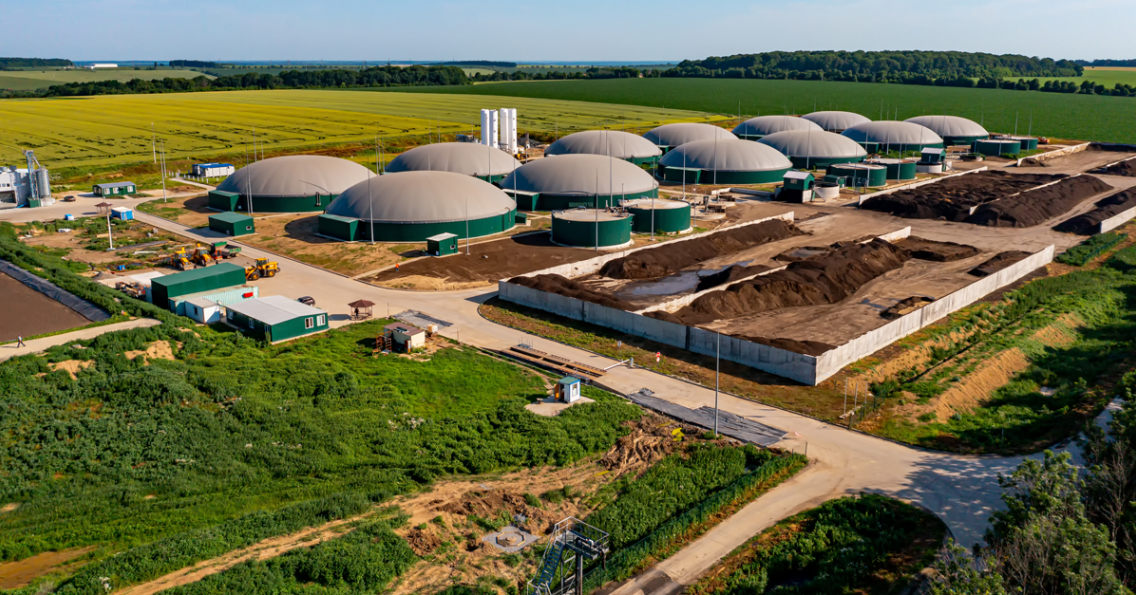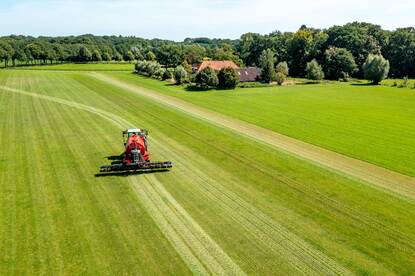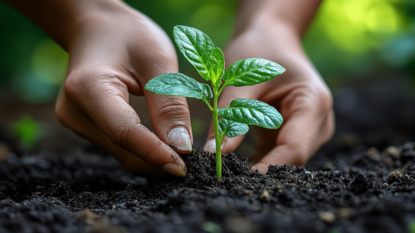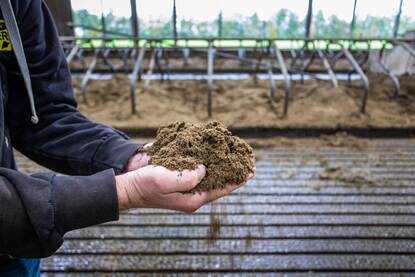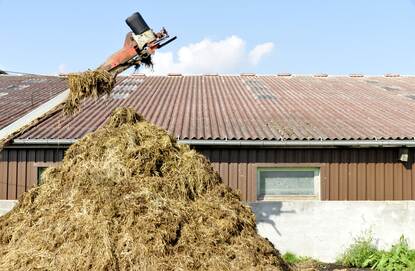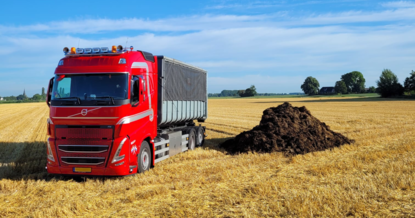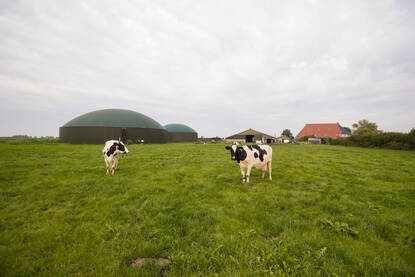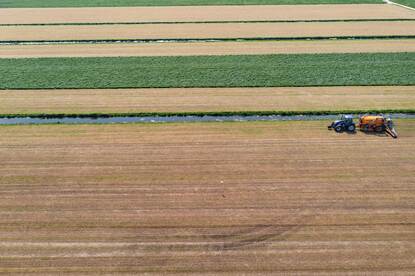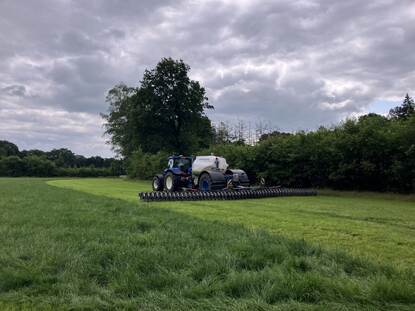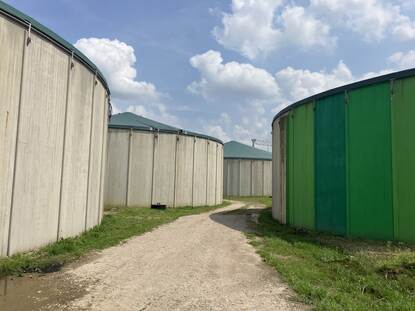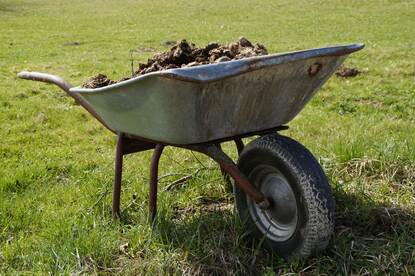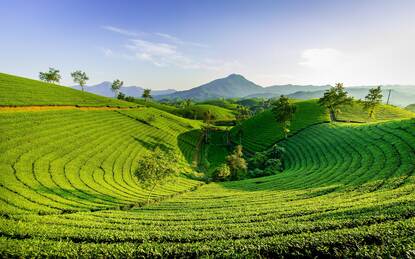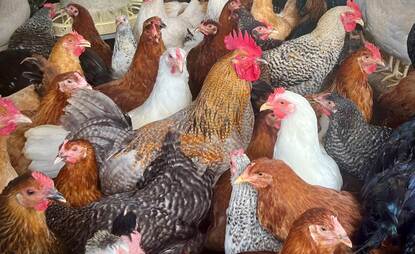Foto Biogas production site in Italy, Source: Planeta PSR
Lombardy, a key agricultural region in Italy, faces environmental challenges due to its dense livestock farming. To address this, the region is turning to biogas and biomethane production, converting livestock waste into renewable energy. This innovation not only helps reduce emissions but also opens new opportunities for sustainable farming, supporting both local agriculture and Italy’s climate goals. The Netherlands Agricultural Network (LAN) in Rome will play a role in fostering collaboration and innovation between Italy and the Netherlands, further boosting efforts in sustainable farming and manure processing.
In Italy, livestock farming is concentrated in the northern part of the country along the Po River, which flows through the regions of Piedmont, Lombardy, Emilia Romagna, and Veneto. The surface area of the Po Valley is comparable to that of the Netherlands. The area is known for several agrifood products, often with a Protected Designation of Origin, such as Parmigiano Reggiano (cheese) and Prosciutto di Parma (ham). About 64%, 78%, and 88% of Italy’s cattle, poultry, and pigs are sourced from these regions. Lombardy has by far the largest production. The region’s surface area is half the size of the Netherlands (26,000 km²), with 70% being rural land.
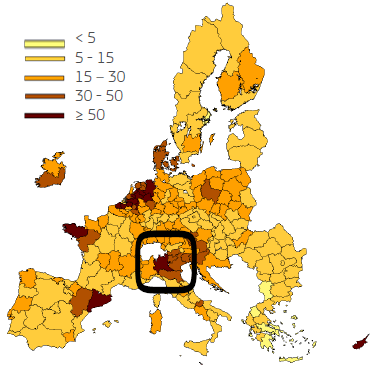
The density of cattle, pigs, and poultry is considerably higher in Lombardy than in the other three regions of the Po Valley. Dairy farming is the primary activity, with around 14,000 farms (1.5 million animals), followed by 2,500 pig farms (4 million animals), and 900 poultry farms (25 million animals). About 90% of nitrate emissions come from the dairy and pig sectors, with contributions of 60% and 30%, respectively.
Mitigating emissions
The Nitrogen Directive of the European Union requires the region to set up nitrogen abatement programs to mitigate emissions and comply with water and air quality standards (e.g., particulate matter, PM2.5). Farmers face several challenges and restrictions on production due to the surplus of nitrogen and ammonia emissions. These include limitations on the level, timing, and methods of manure application, as well as how manure is stored. The mandatory limit cannot exceed 170 kg of nitrogen per hectare on average per farm.
Manure distribution within the region is managed to ensure nitrogen levels do not exceed regulatory limits.
Because of high particulate matter (PM2.5) emissions related to ammonia emissions from manure, the application of manure is restricted. Therefore, manure surpluses can arise. Investments in livestock housing, manure application techniques, innovative digestate application techniques, valorization of digestate, and other emission-reduction measures are ongoing.
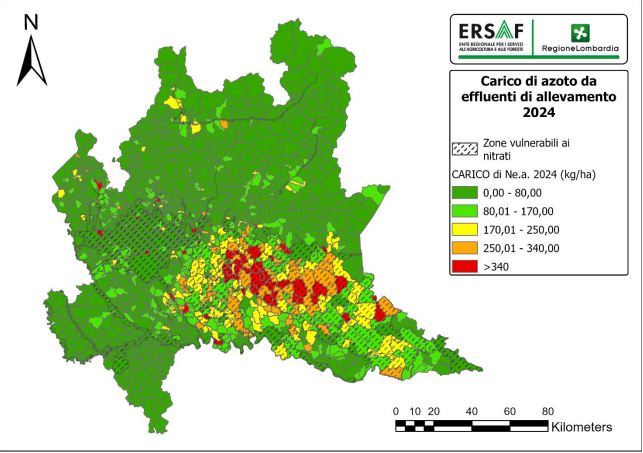
Biogas and biomethane: a sustainable solution
In Italy, biogas and biomethane production are considered key options for reducing nitrogen and ammonia emissions and valorizing manure. The country is the second-largest biogas producer in Europe and the fourth largest in the world. Biogas plants in Italy are powered by over 40 million tons of treated agricultural biomass, which consists of 60% livestock effluents, 30% dedicated crops, and 10% agro-industrial by-products. These plants produce approximately 2.2 billion m³ (standard cubic meters) of biomethane and about 3 million tons of digestate. Most plants in Italy use more than one type of organic material at the same time (co-digestion). A mono-type digestion is less common. Within Europe, the average installed capacity in Italy is high (>100 m³/h).
For the agricultural sector, biogas plants play a pivotal role in making businesses more competitive and help the diversification and innovation of production, the adoption of more sustainable practices, income integration, job creation, and the survival of farming activities in marginal areas. Biogas also supports the development of a circular and sustainable bioeconomy, enhancing the value of livestock waste, by-products, processing waste, and plant residues.
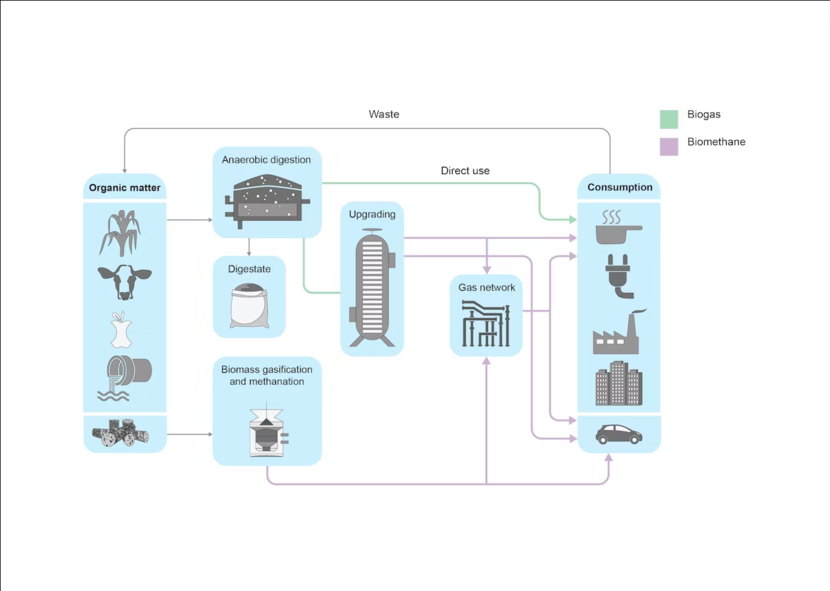
Towards a more sustainable energy system
The main driver for investing in biogas production in Italy is to contribute to a more sustainable energy system. Biogas and biomethane production are strategic allies in reducing dependence on natural gas and achieving ambitious climate change and carbon reduction goals. Additionally, the valorization of organic waste supports the circular economy.
In Lombardy, biogas is part of the regional strategic plan for sustainable development, supported by investments in innovation from the National Plan for Recovery and Resilience (PNRR). In this PNRR, 1.92 billion euros is dedicated to the entire chain of biomethane production, with the aim to double it to 4 billion m³ by 2026 and to 8 billion m³ by 2030 (estimate by the Consorzio Italiano Biogas (CIB). Currently, 500 out of the 1,500 Italian biomethane installations are in Lombardy (1,200 MW), most of which are based on organic waste and manure. More investments and innovations are expected soon.
In the Netherlands, biogas production is still limited but it is considered by many parties as a promising way to reduce methane and ammonia emissions from manure and to valorize manure. Seeing as Italy is a frontrunner in biogas production, it offers valuable technical and organizational insights into the production chain. According to recent data, around 2,200 biogas plants are operational in Italy, with 80% in the agricultural sector, predominantly in the Po Valley regions.
As the Councilor for Agriculture, Food Sovereignty, and Forests of the Lombardy Region, Alessandro Beduschi, said: 'Biomethane represents an ever-increasing frontier, especially for a region that leads in livestock farming. The ability to transform a problem into a resource is crucial for our agricultural and environmental future. Using livestock waste to produce biomethane not only reduces environmental impact but also provides significant economic opportunities for our farms. It is a step toward a more sustainable circular economy that enhances local resources and promotes innovation in agriculture.’
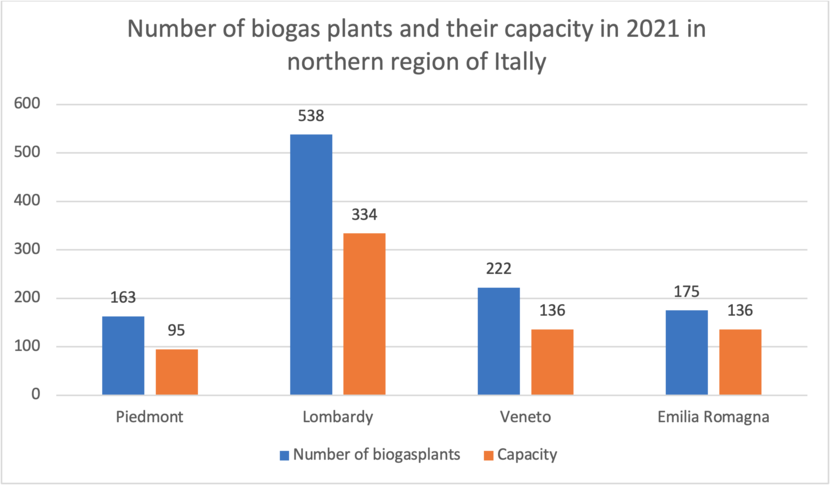
Innovation mission in 2025
In May 2025, the Netherlands Enterprise Agency (RVO), in close cooperation with the LAN team at the Dutch Embassy in Rome and the Dutch Ministry of Agriculture, Fisheries, Food Security and Nature (LVVN), will organize an innovation mission to the region. The goals of this innovation mission include:
- Gaining insight into the ecosystem, innovative developments, and opportunities for manure processing and valorization in Northern Italy.
- Learning from Italian farmers how they manage their challenges in decreasing emissions from manure.
- Exploring and exchanging trends and best practices in policy with agricultural organizations, agro-food industries, and farms.
- Exploring trends and opportunities for multi-year public-private collaboration between knowledge institutions and companies in research and development on the further development of biomethane production and manure valorization as well as manure management.
- Linking innovative knowledge and technology on manure management from the Netherlands to market opportunities in Italy.
The participants will visit national and regional research and development institutes and universities as well as speak to policymakers, farmers, biogas and biomethane producers, and innovators.
‘The ability to transform a problem into a resource is crucial for Italy’s agricultural and environmental future’
More information
Would you like to know more about manure management and biogas innovation in Northern Italy? You can visit the country page of Italy at the website Agroberichtenbuitenland.nl of the Dutch Ministry of Agriculture, Fisheries, Food Security and Nature. You can also send an email to the LAN team at the Dutch embassy in Rome: rom-lvvn@minbuza.nl.
